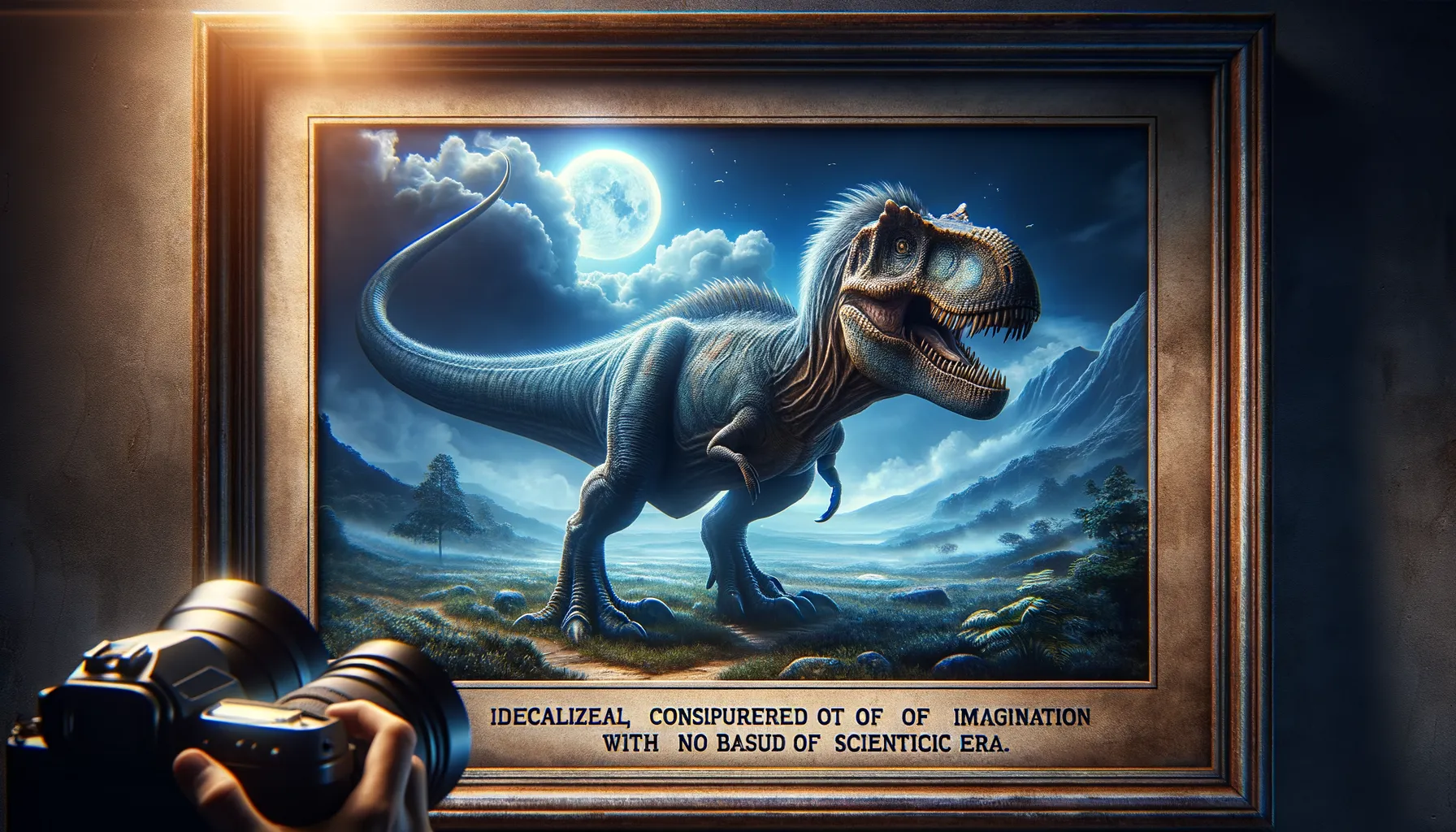
Griphosaurus
Imagination breathes life into ancient giants.
Period
Unknown
Length
Unknown, as Griphosaurus is fictional.
Height
Unknown, as Griphosaurus is fictional.
Weight
Unknown, as Griphosaurus is fictional.
Griphosaurus is a fictional dinosaur, which means it does not have real-world data or historical discoveries associated with it. Often created for fictional stories or illustrative purposes, such dinosaurs are crafted to spark imagination. Their characteristics, such as size, diet, and behavior, are typically defined by creative storytelling rather than scientific evidence. As such, information about Griphosaurus is often speculative and should be taken as a fictional representation.
Diet
Being fictional, Griphosaurus's diet is not based on evidence. In stories, it might be portrayed as herbivorous or carnivorous depending on the plot.
Hunting
As a fictional entity, details about its hunting methods are speculative. It might be depicted as solitary or social in fictional narratives.
Environmental challenges
As a created dinosaur, its environmental challenges are imagined. Fictional accounts might describe it adapting to volcanic activity or competing for resources with other dinosaurs, creating engaging storylines of survival. Such tales often illustrate adaptive behaviors or dramatic ecological battles as part of their setting.
Speed
Unknown, as Griphosaurus is fictional.
Lifespan
Unknown, as Griphosaurus is fictional.
First discovery
As a fictional dinosaur, it has no real discovery.
Fun Facts
- Griphosaurus, whose name means 'griffin lizard,' was a dinosaur that lived around 150 million years ago during the late Jurassic period.
- Despite its mythical-sounding name, Griphosaurus is named after its bird-like features, resembling the legendary griffin creature.
- This dinosaur had a beak-like snout, much like a modern bird, which it probably used to snap up plants or small prey.
- Griphosaurus was likely a feathered dinosaur, giving it a soft and fluffy appearance, unlike the scaly reptiles we often imagine.
- It was a relatively small dinosaur, thought to have been about the size of a turkey, making it quite different from its giant dinosaur relatives.
- The discovery of Griphosaurus fossils has helped scientists understand more about the evolution of birds from dinosaurs.
- Griphosaurus had sharp claws which may have helped it climb trees or catch its food, showing its adaptability in its prehistoric environment.
Growth and Development
Since Griphosaurus is fictional, its growth and development are crafted for storytelling. It might be described as rapid or slow-growing, with unique evolutionary traits invented to make it relatable or fantastical in its fictional universe. These attributes provide depth to its character in the narrative.
Habitat
In fictional settings, the habitat of Griphosaurus would be constructed for narrative purposes. It might live in lush jungles or dry deserts, depending on the story's needs, showcasing a diverse range of environments. The habitat often plays a critical role in defining the character’s survival strategies and interactions.
Interaction with other species
As a fictional creation, its interactions are motivated by narrative. It can be depicted as cooperative with others or involved in territorial disputes. Such interactions are crucial for storytelling, adding layers to the dynamics between species and enhancing the plot's complexity.
Natural lifespan
As fictional, its lifespan is a narrative choice.
Reproduction
As a fictional dinosaur, details about its reproduction are invented. It might lay eggs with vibrant shells, acting as a plot device to introduce themes of survival or nurturing within stories. Such imagined details help add fascination and depth to its character.
Social behaviour
Griphosaurus, being fictional, could display any range of social behaviors. It might be depicted as solitary or leading large herds, guided by the plot's direction. These behaviors can add tension or charm to interactions with other characters in the narrative.
Fossil locations
Nonexistent in reality, but fictionally could be found worldwide. Writers may choose diverse locations to lend trivial factual grounding or connect the story to real-world places.
